#saponin
Photo
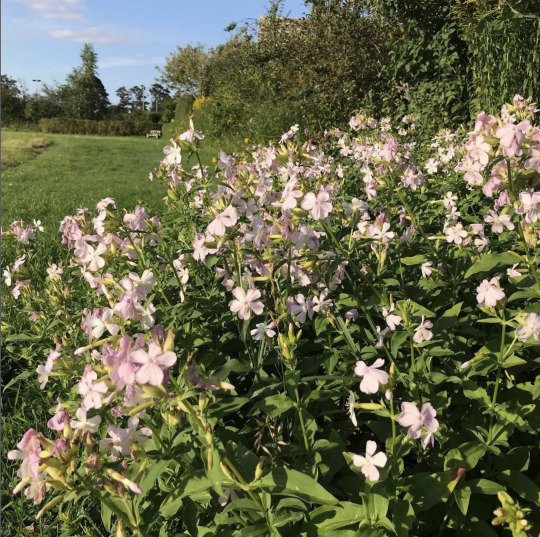
Soapwort (Saponaria officinalis) is a wildflower that does “exactly what it says on the tin”. This wild plant of meadows and forests across Europe and Western Asia evolved high concentrations of the chemical saponin in its stems and roots to deter herbivores. While saponins are toxic if ingested by humans and other animals, these chemicals are very useful for cleaning because they cause grease and fats to dissolve in water. These chemicals are called surfactants, and synthetic versions are found in soap, washing up liquid, shampoo, and shower gel. In the past, country folk made their own cleaning products for wool and other delicate textiles using soapwort.
#katia plant scientist#plants#wildflowers#wildflower#soapwort#saponaria#saponaria officinalis#chemistry#biochemistry#cleaning products#natural remedies#natural products#saponin#surfactant#cottagecore#cottagecore aesthetic#cottage life#english countryside#plant biology#botany
8 notes
·
View notes
Text
My wife asleep
Cogiendo una chapina de corte bien peludita
duas vadias chupando um pau
Cogida De Lujo Para Bella Rubia
Hot chick masturbate with black dildo over glass cum
girl love gangbang
Blonde Melissa May has a crush on her stepsister
Hot Asian Masturbates on Toilet
Adorable big dick latina tgirl
Greek slut Amber is the freakiest wife
#saponin#arborescence#nondemonstrableness#Cartist#unopportunistic#juniorate#ironhearted#siccing#dragi#preinsular#hippophagy#beribers#sanand#Jayem#unportunate#cap-a-pie#psephitic#cleanse#postintestinal#smiercase
0 notes
Text


After raining all day yesterday, I noticed this foam at the base of a Japanese Yew in my yard. I’m assuming it’s saponin? I wonder if it’d be safe for skin because I know most parts of this tree are toxic.
0 notes
Photo

Starific ! ( Quillaja ) ✴️ • Quillaja is a genus of flowering plants, the only extant genus in the family Quillajaceae with two or three known species. It was once thought to be in the rose family, Rosaceae, but recent research shows it belongs in its own family. The inner bark of the soap bark tree contains saponin, which is a natural soap. #pratheepvijay #pratheepvijayphotography #quillaja #quillajaceae #rosaceae #saponin #genus #floweringplant #nature #naturephotography #natgeo #bbcearth #naturelovers #star #wildlife #wildlifephotographer #naturephotographer #shotonrealme #shotoniphone #shotonrealme8pro #realme8pro #food #molina #instagood #instagram #mobilephotography #photography #picoftheday #photooftheday #nofilter (at Padi, Chennai) https://www.instagram.com/p/CeOud1vhpHd/?igshid=NGJjMDIxMWI=
#pratheepvijay#pratheepvijayphotography#quillaja#quillajaceae#rosaceae#saponin#genus#floweringplant#nature#naturephotography#natgeo#bbcearth#naturelovers#star#wildlife#wildlifephotographer#naturephotographer#shotonrealme#shotoniphone#shotonrealme8pro#realme8pro#food#molina#instagood#instagram#mobilephotography#photography#picoftheday#photooftheday#nofilter
0 notes
Text
youtube
find more my work here https://msha.ke/romanmuhtar
lets be friend https://roman.muhtar
So hi, i making this video is to answer your question on my instagram or some comment on youtube, “does it fade? The ecoprint.” “Is that ok the color” “how to wash the ecoprint”
So in here i would like to show you when im wash my ecoprint.
I start with the water, it just plain water, im not using any chemical detergent, maybe im just wash on the spot directly if there any dirty things on the fabric.
And for your information, In indonesia we use lerak for washing any natural dyes fabric, like batik, jumputans or shibori, handwoven fabric and more. Actually lerak is kind like fruits seeds, its traditional nature zero waste washing agent to keep the color long lasting of the natural dyes fabric.
and some shop here is sell ready to use lerak liquid, so im just add some on the water, because on lerak is contain saponins, a toxic alkaloid that produce foam and work as a washing agent, saponin work as Surfactants that can lift stain, oil, and dirt from the fabric while in the water but still keep the natural color dyes long lasting.
But in here im not use any lerak, and if you dont have lerak, you can use hair shampoo instead to wash your ecoprint. And here im using shampoo just a bit
#Roman Nuansa#solarpunk#eco print#dye#natural dye#how to#diy#do it yourself#how to wash eco print#indonesia#lerak#batik#jumputans#shibori#handwoven fabric#saponins#Youtube
2 notes
·
View notes
Text
Le proprietà biologiche della quinoa e gli effetti dei suoi princìpi bioattivi sulla salute
Quinoa è il nome comune della Chenopodium quinoa, una coltura a grano intero appartenente alla famiglia delle Amaranthaceae. La quinoa è originaria delle Ande sudamericane e può essere trovata in tre varietà differenziate per il colore bianco, nero o rosso. La quinoa sta diventando sempre più popolare, soprattutto tra le persone attente alla salute e al fitness, poiché è una ricca fonte di…

View On WordPress
#20-idrossi-ecdisone#acidi fenolici#ansiolitico#biopeptidi#ciclo dell&039;urea#colon irritabile#fitosteroli#flavonoidi#insulino-resistenza#intolleranza al lattosio#ipercolesterolemia#iperglicemia#ipertensione#polifenoli#quercetina#quinoa#saponine
0 notes
Text
Language of Flowers: Teasel
In the language of flowers, every day has its designated flower. The flower for today, December 2, is Teasel, which signifies misanthropy.
Image above from Wikipedia.
Dipsacus is a genus of flowering plant in the family Caprifoliaceae native to Europe, Asia, and northern Africa. The genus name is derived from the Greek word for thirst (dipsa) and refers to the cup-like formation made by Teasel…
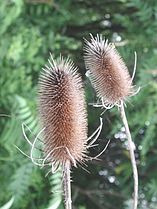
View On WordPress
#birthday#Caprifoliaceae#December#Dipsacus#dipsacus saponin C#Francis Darwin#herbalism#Language of flowers#Teasel
0 notes
Link
1 note
·
View note
Text
Saponins In Food
There has been a lot of recent interest in saponins, which are plant-based compounds that are found in a variety of healthful foods. But what exactly are saponins, and why are they bad for your health? In this blog post, we’ll explore the answers to these questions and more.
Saponins are bitter, soapy-tasting compounds that are found in a variety of plants, including legumes, grains, herbs, and…
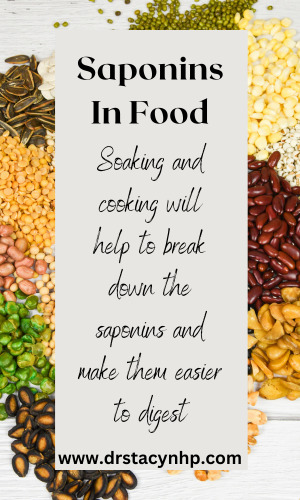
View On WordPress
0 notes
Text
Antiviral substances discovered within native plants in South Korea
Antiviral substances discovered within native plants in South Korea
Newswise — Codonopsis lanceolata, more commonly referred to as “deodeok”, is used as a medicinal herb in South Korea. It is cultivated in large quantities and has been an integral part of Korean cuisine across history. Aster koraiensis, or Korean starwort, is a common flower that resembles a daisy, which is only found in the Korean peninsula. What can these two different types of plants have in…
View On WordPress
#All Journal News#Cell Biology#coronavirus#infectious diseases#Institute for Basic Science#Newswise#Plants#public health#SAPONINS;covid 19;cell surface receptors
0 notes
Photo
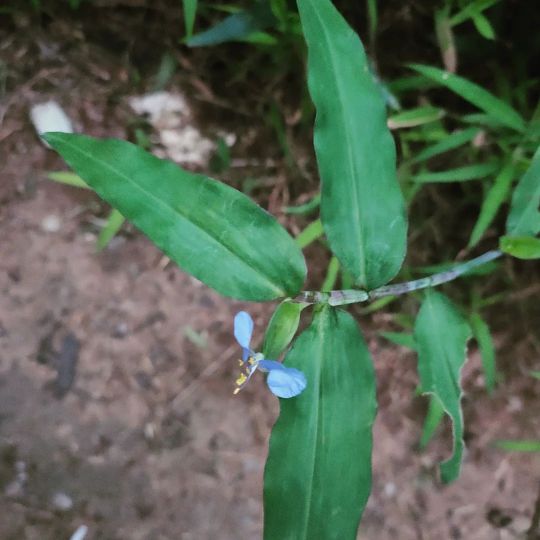
Another gift from Nature in our herbal garden is this humble little beauty. With it's high content of #saponins #commelinales diffusa is widely known as the climbing dayflower or spreading dayflower, which is an annual herb belonging to the family Commelinaceae has been used as a #medicinal plant for centuries to heal swelling, treatment of urinary tract infection and respiratory tract infections, diarrhea, enteritis, and hemorrhoids, in fever, malaria, insect, bug bites, rheumatoid arthritis, gonorrhea, influenza, and bladder infection, etc. 🌿🌿🌿 Experiments have been conducted to observe the pharmacological properties of this #herb reporting pharmacological #healingproperties of this plant were reviewed such as anti-inflammatory activity, #antioxidant activity, #antibacterial activity, #antifungal activity, nephroprotective activity, hepatoprotective activity, central nervous system (CNS) depressant activity, etc. This is probably due to the #saponins (at OSHRAM) https://www.instagram.com/p/Cgg6KRfPsiI/?igshid=NGJjMDIxMWI=
0 notes
Text
Sulwhasoo Concentrated Ginseng Renewing Water: Antioxidant-Rich Toner to Hydrate, and Visibly Soften Lines & Wrinkles, 5.07 fl. oz.
4.5 out of 5 stars 14 ratings
Price: $100.00 ($19.72 / Fl Oz)

#DESCRIPTION#A luxe#supercharged anti-aging toner with Ginsenomics#a precious and highly active Ginseng saponin#helps improve the look of wrinkles and elasticity while hydrating for a rejuvenated complexion#Best Sellers Rank:#231#673 in Beauty & Personal Care (See Top 100 in Beauty & Personal Care)#1#253 in Facial Toners & Astringents#Customer Reviews:#4.5 out of 5 stars 14 ratings
0 notes
Text
Considering i havent posted on my main crafts account but i have a lot to say i will do a mini post with a few things ive done recently:

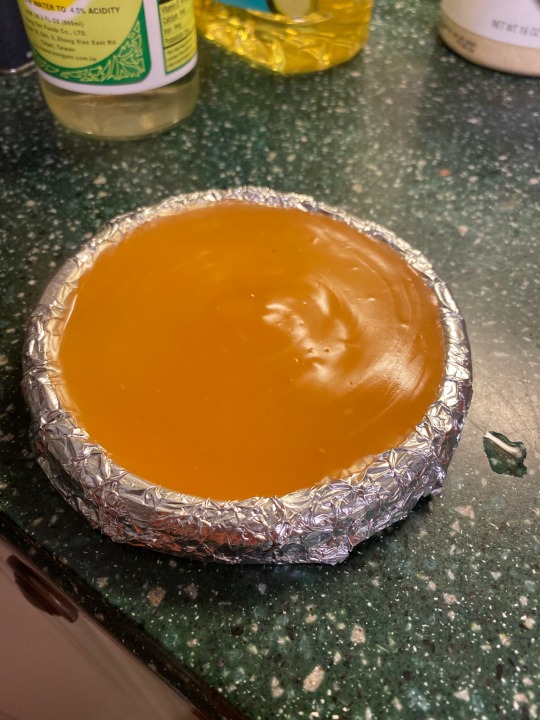
Most recently (like, today) corn starch/glycerine/vinegar bioplastics (+yellow onion skin dye for the orange, not yet set fully) Should be good to take out of the plates in like 8 or so days
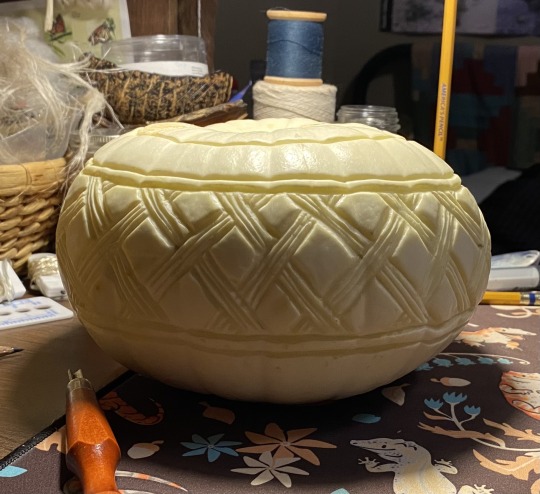
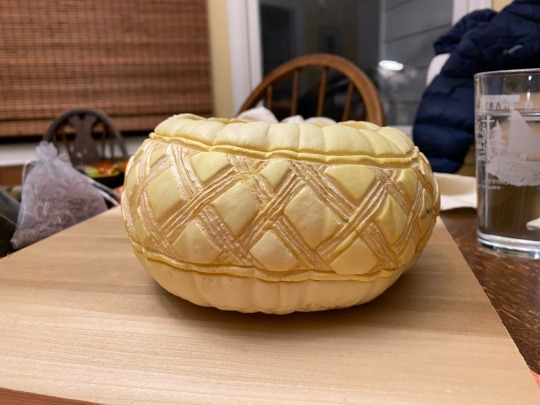
WIP drying pumpkin out to hopefully make a patterned container, found a pumpkin someone had thrown on the sode of the road and carved a design into it/emptied it out
i'm *hoping* packing it with salt will let it drain of enough water like the last pumpkin i made this way. I think i might not have thinned the walls enough and it'll take a while to dry before i can test this guess

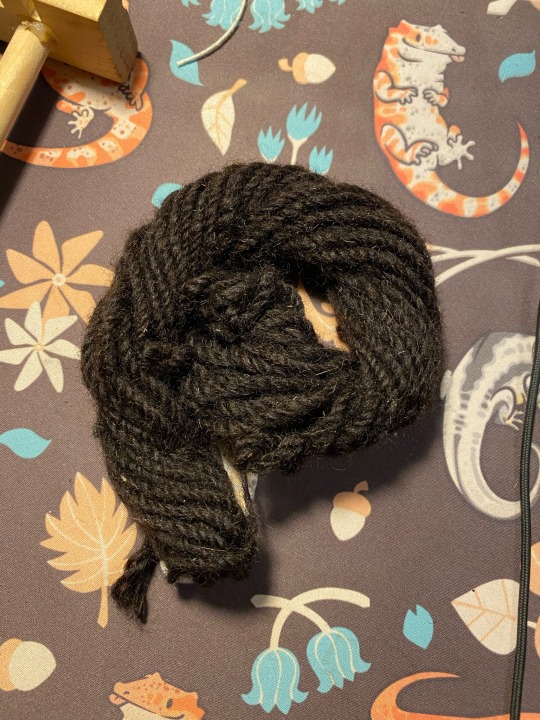
Spun yarn (raw wool washed using saponins extracted from lambsquarters/goosefoot seed coatings)
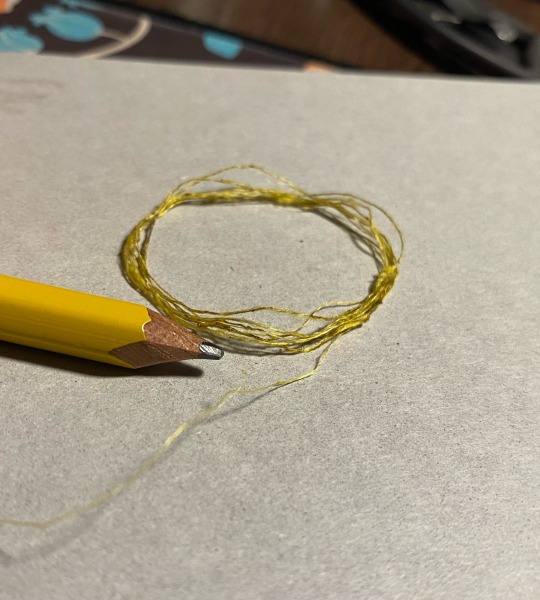
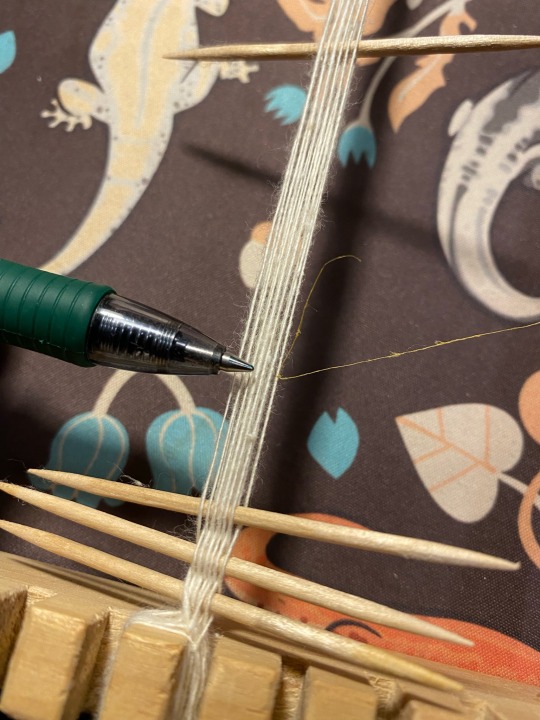
SPIDER SILK plus beginnings of a very tiny weaving attempt again with them; i think it's too tiny for the warp though


A small sampling of plant pigments (usually anthocyanins) i've tried working with recently (mostly mixed with water, some egg tempura experimenting as well)
Hoping that posting this will kickstart my brain to post more about these specific things with even more detailed observations soon
(particularly the anthocyanins)
209 notes
·
View notes
Note
do you have a short list of compounds that make you automatically rule out a food as cat-safe? unfortunately i find that most things say "it can cause an upset stomach!!!" when i look them up which doesn't actually tell me "is this Actually Poison or could a clan cat (who has a slightly stronger stomach than a real cat) be fine eating this?"
Not compiled, but from what I remember off the top of my head;
Tartaric Acid (grapes, raisins)
Saponins (This is the instant-kill compound in lilies)
Peonine (Had to rule out peonies as a medicine because of this)
Taxine (Yew)
Yeast (raw yeast will ferment a cat's stomach acids, VERY painful way to die)
Methylxanthines (Caffeine, theobromine, this is the thing that makes chocolate kill non-human animals)
Organosulfides (From alliums like onions or garlic; destroys blood cells and causes rapid anemia)
The way I figure out if it's deadly or not is by doing that cursory research, then changing the question to "Why is X dangerous to cats?"
In the case of peppers and capsaicin, you'll get a further breakdown of "because it upsets their stomach, they probably can't taste it anyway, etc etc." In the case of onions, you will get a further explaination of organosulfides and how these can oxidize red blood cells.
This becomes a lot more important for my medicinal research for herb guides, because you get less straight answers for plants that aren't usually used in cooking. It makes sense; people are infinitely more likely to google if they need to take their pet to the hospital after it snuck a couple bites of forbidden food, rather than "white peony safe for cats?"
112 notes
·
View notes
Text
You know what Alola has a lot of? Water. And when there’s lots of water you get lots of aquatic Pokémon. Welcome back to the series where I discuss the real-life inspirations of every aquatic, non-fish Pokémon. This time I’m covering gen VII. To see previous entries in this series see gen I part 1, gen I part 2, gen II, gen III, gen IV, gen V, and gen VI. For my previous series where I covered the origins of all fish Pokémon see here. As before, starters and legendary/mythical Pokémon will be covered in a separate series. I’ll also cover ultra beasts separately, so no Nihilego this time.
Starting things off we have Marenie and Toxapex bringing us the first echinoderms since gen I. While Staryu and Starmie were generic starfish, the Marenie line are based specifically on the crown-of-thorns starfish.
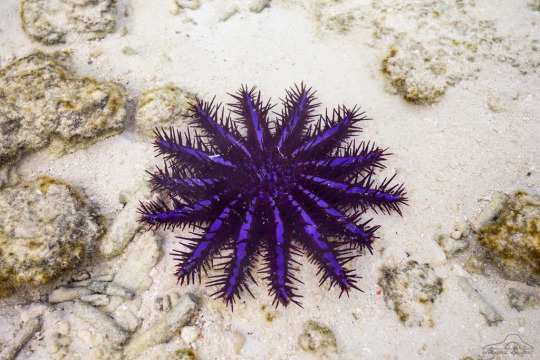
(image: a crown-of-thorns)
These are large starfish covered with venomous spines. The spines are used for defense as they (and the starfish’s other tissues) are filed with a chemicals called saponins. While there is no mechanism for injecting venom, any animal punctured by a spine will get the venom in the wound. It is hemolytic, causing destruction of red blood cells, which can lead to the injured animal suffocating or bleeding out. In addition, the spines are brittle and can break off and get stuck in a wound. In humans, the venom can cause sharp, stinging pains, persistent bleeding, and swelling and nausea for up to a week after the sting. The persistent nature of the pain and hemolysis may be the basis for the line’s signature ability “Merciless”. The other big feature of the crown-of-thorns is its diet. They feed on coral polyps by everting their stomachs onto coral and digesting them externally. This is why the line are specifically stated to prey on Corsola. Too many crown-of-thorns in one coral reef can badly damage it, hence why Toxapex is said to leave a trail of Corsola horns in its wake. Toxapex also takes influence from the hā’uke’uke or helmet urchin, a species found in Hawaii that is shaped very similar to Toxapex’s tentacles when they are all down.

(image: a hā’uke’uke)
Dewpider and Araquanid are based on diving-bell spiders. These spiders spend almost their entire lives underwater, the only species to do so. They do still need to breathe air and so used a coating of water-repelling hairs to carry a bubble of oxygen with them when they are underwater, surfacing occasionally to refresh their supply. The Dewpider line are the inverse of that: a species that can only breathe water and need to bring a bubble of water with them while they live on land. Because of this, they may also be based on sea spiders, a group of marine arthropods that look very similar to spiders. This origin is more noticeable with Araquanid, which has the skinny body and long legs of sea spiders. In both species, the bubble over the head is based on a diving helmet.
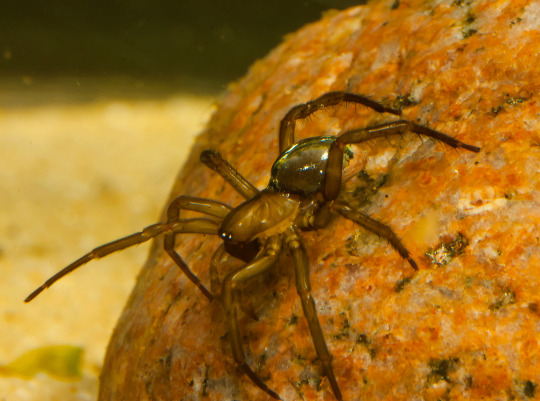
(image: a diving bell spider with its air bubble visible)
Wimpod is one of my favorite gen VII mons and its origin is complex. It is based on a variety of aquatic arthropods. Most notably it resembles an isopod while having a head similar to a trilobite.
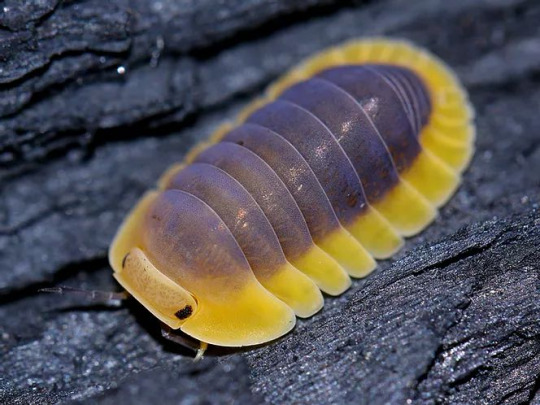
(image: a terrestrial isopod)
It also looks like a copepod, which are zooplankton that have prominent antennae. Fun fact: Plankton from Spongebob is a copepod.

(image: a copepod)
Wimpod’s behavior of fleeing at the first sign of danger is very similar to silverfish. These are insects with a similar body shape to Wimpod that are famous to coming out in the dark and fleeing once the lights come on.

(image: a silverfish)
Wimpod’s habit of eating almost anything and leading a clean path as it travels makes it effectively a living Roomba. As Golisopod, it is based on the giant isopod, a group of species that are much larger than the average isopod thanks to deep-sea gigantism. This is a phenomenon where animals living in the deep ocean become larger than their shallow-water relatives and has a number of proposed causes. The largest and most famous of the giant isopods reaches a maximum recorded length of 50 cm (19.65 in), which is still quite a bit shorter than Golisopod’s 2 m (6’7”). It is also based on samurai as its shell resembles samurai armor and some of its behavior (such as meditation) comes from samurai stories. Its ability to cleave the air in twain with its claws likely comes from classic exaggerations of a warrior’s ability. Golisopod doesn’t care much for a samurai’s code of honor though, as it will happily fight dirty and run from fights.
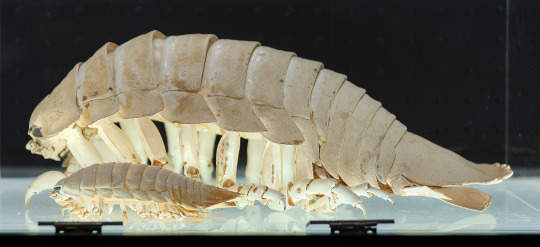
(image: preserved specimens of two giant isopod species)
Gen VII was a good one for echinoderms as coming off the hells of the starfish Marenie line we get a sea cucumber in Pyukumuku. Sea cucumbers have a pretty simple body plan, basically looking like tubes. Their most famous ability is a defense strategy some species employ where they can eject part of their guts to deter predators. In real sea cucumbers, the ejected guts will regenerate while in Pyukumuku, they can retract back into the body and even act like a hand. Sea cucumbers also have external gonads that look like strings. The fluffy tail Pyukumuku has is actually its genitals. The spikes on top might be based on sea urchins, which are relatives of sea cucumbers.
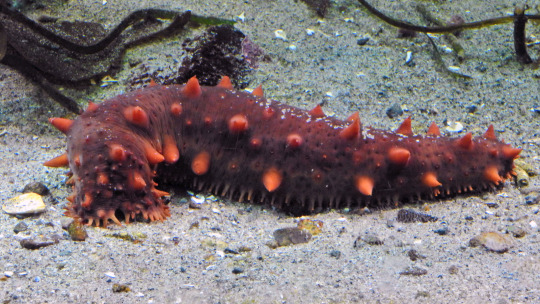
(image: a sea cucumber with similar spines to Pyukumuku)
Our final Pokemon for today is Dhelmise and it’s a weird one. An anchor and ship’s wheel bound together and possessed by the ghost of seaweed. What confuses me is that it’s a wooden anchor. It turns out wooden anchors were used at one point in early boats, but were phased out in favor of ones made of iron. Dhelmise being haunted parts of ships is reminiscent of tales of ghost ships, though on a smaller scale. The seaweed on it may be dead man’s fingers, which grows small tendrils and the name is obviously fitting for a ghost-type.
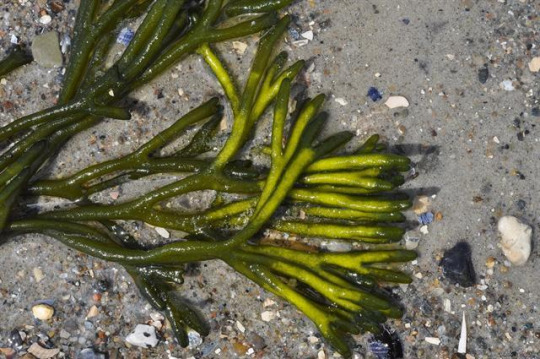
(image: dead man's fingers)
The shiny version having red seaweed could reference red tide, a type of algal bloom that can turn parts of the ocean red. Dhelmise hunts Wailord, meaning it may have been a part of a whaling ship and now the ghosts within it are carrying out their last tasks endlessly, a common trope in ghost stories. It may also reference Moby Dick’s Captain Ahab and his obsessive quest to kill the white whale.

(image: a sunken anchor from a shipwreck in Hawaii's Papahānaumokuākea National Monument)
That’s all for now. Return next time when we go to Galar.
#pokemon#pokemon biology#pokemon lore#pokemon origins#marine biology#aquatic biology#animal facts#zoology#marenie#toxapex#dewpider#araquanid#wimpod#golisopod#pyukumuku#dhelmise#starfish#crown of thorns#diving bell spider#isopods#trilobite#copepods#giant isopod#sea cucumber#echinoderm#anchor#silverfish
176 notes
·
View notes
Text
Il fieno greco: una vecchia erboristica diventa preziosa per potenziali nuovi farmaci, alimenti e bevande
Il crescente interesse nell’adozione di uno stile di vita più sano è stato accompagnato da un maggiore utilizzo di ingredienti alimentari sani, ovvero composti bioattivi presenti in natura che hanno funzioni nel corpo umano correlate alla salute umana. Questi alimenti sono spesso definiti alimenti funzionali e sono fondamentali per prevenire le malattie, gestire le condizioni croniche e fornire…

View On WordPress
#acidi fenolici#additivi alimentari#alcaloidi#alimenti funzionali#antibatterico#antiossidante#Diabete mellito tipo 2#fieno greco#fitosteroli#flavonoidi#glucoside#indice glicemico#ipertrigliceridemia#omega-3#polifenoli#saponine#trigonellina
0 notes